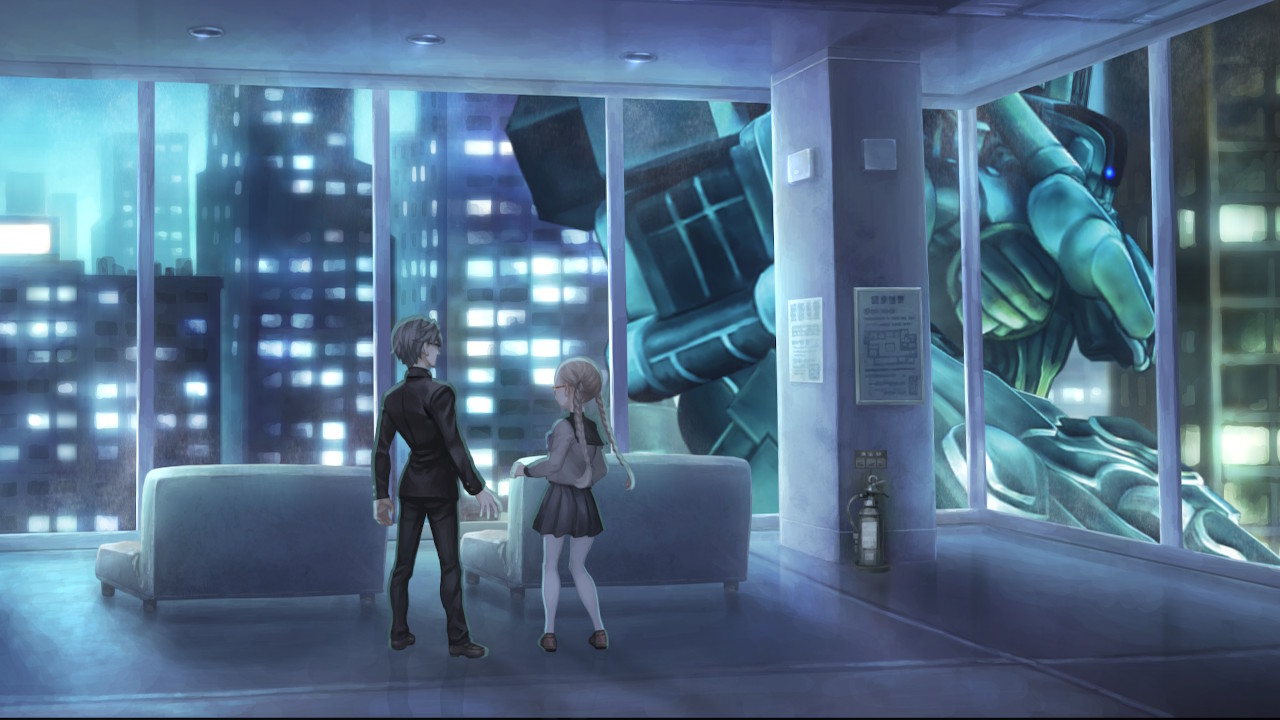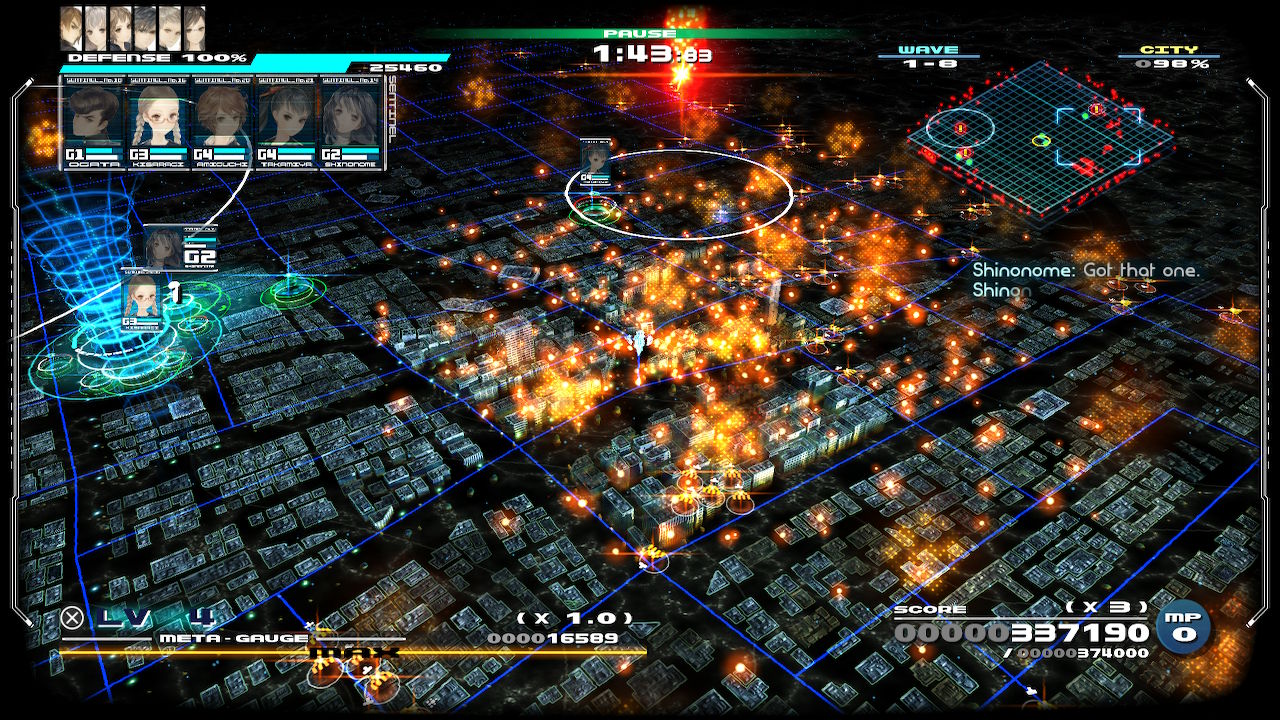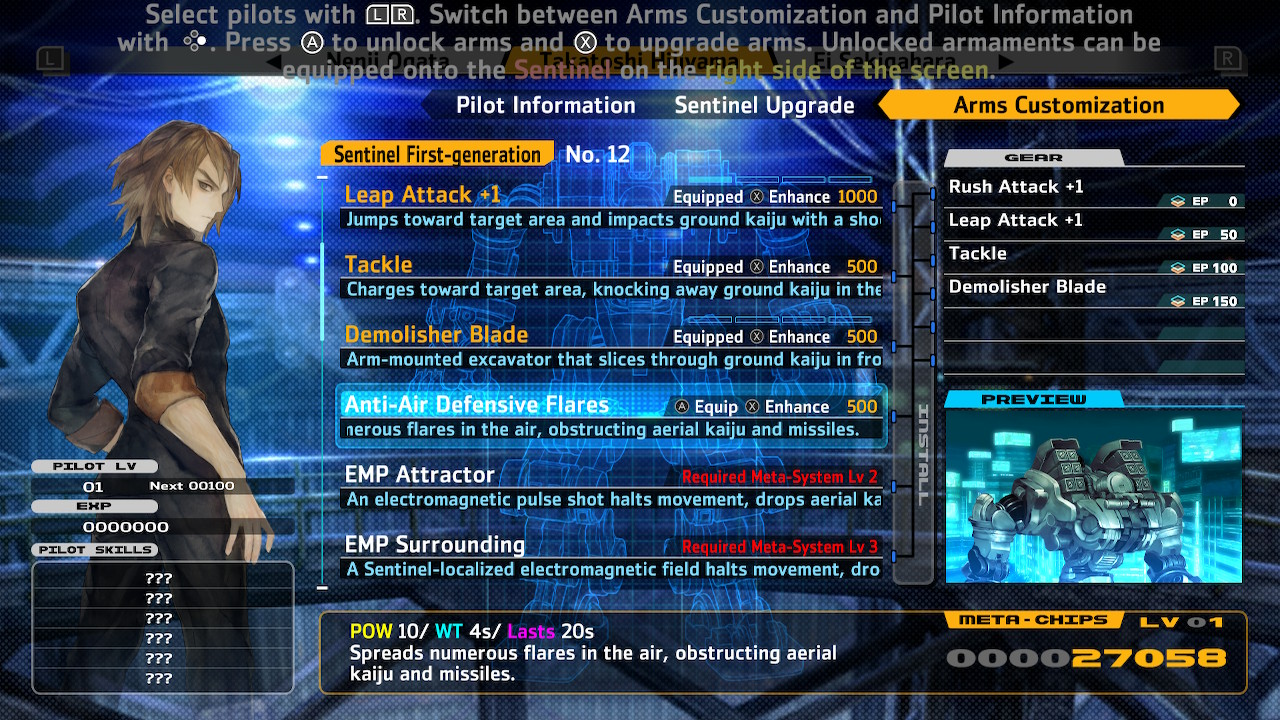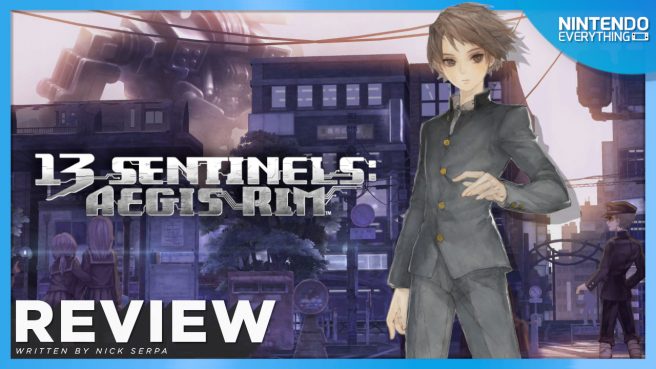[Review] 13 Sentinels: Aegis Rim
System: Switch
Release date: April 12, 2022
Developer: Vanillaware
Publisher: Atlus
If any game is a shining example of the artistic potential of video games as a medium, I cannot think of a better recent example than 13 Sentinels: Aegis Rim. It is that rare type of narrative-driven experience that could only really exist as a game: a sprawling science-fiction epic with no less than 13 playable protagonists, that somehow manages to be both a beautiful side-scrolling adventure and a deep, exhilarating real-time strategy game. With so many moving pieces and a lengthy 40-hour runtime, 13 Sentinels: Aegis Rim could have very easily been a confusing, unfocused mess of a game, but somehow, all of these disparate elements fuse into nothing less than a masterpiece.
To be clear: the very idea of a game with 13 protagonists is insane, and there really is no good reason why any piece of media needs that many key characters to tell a compelling story – at least, that’s what I thought before I finished the game. By the end of my playthrough, I realized that actually, there really is no way that 13 Sentinels could have told the story it did without taking such a risky approach. This is ostensibly a game about how 13 high-school aged students find themselves as humanity’s last chance at preventing the apocalypse, as they are eventually thrust into the cockpits of giant mechs and tasked with defending what’s left of Japan from mysterious, kaiju-esque invaders. But it is also a game whose mystery unravels nonlinearly across five vastly different periods in time, and it’s through this mechanism that each character’s story slowly weaves together with those of the others. And if you think 13 characters sounds like a lot to keep track of, then buckle up, because it all gets even crazier from there.

The bulk of these stories are revealed through a game mode called Remembrance, which lets the player select the order they would like to experience each of the protagonist’s memories in, and which can generally be jumped between in any order. Presented from a side-scrolling perspective, you’ll directly control each character as they explore small, intricately crafted locations across multiple timelines, be that the bustling halls of Sakura High School, the sketchy back alleys of the city, or the ruins of the post-apocalyptic world. These are best described as interactive vignettes, in which the focus is talking with other characters in the scene to unravel more of the mystery.
Each of the locations is also just incredible to experience from an audiovisual standpoint. Each scene and character is intricately hand-painted down to the smallest objects, to the point where if you look closely enough, you can often identify individual brushstrokes. The lighting is exceptionally beautiful for a 2D game, bouncing realistically off surfaces and adding a sense of depth to this world that is unparalleled for a side-scroller like this. The sound design is layered and alive, from the idle chitchat of passing crowds to the gentle sway of the leaves on a cherry blossom tree. Pensive, sometimes surreal music will often raise to the top of the soundscape at exactly the right moments, before subtly fading away to let the sounds of the world itself shine through. This is what developer Vanillaware has historically excelled at, so none of this came as a surprise to me, but I really can’t understate just how well-realized of a world they’ve created.
As you talk to more characters or find points of interest around the environment, your protagonist will collect different words and phrases in their own “Thought Cloud,” opening new conversation paths that can lead to different timelines or vivid flashbacks of memories. These can occasionally feel like small, self-contained puzzles, but they’re not particularly complex to get through – while it’s tempting to compare the time travel antics on display here to something like Zero Escape or AI: The Somnium Files, it’s executed in a very different way. Surprisingly, there’s a not a single dud in the game’s cast of characters. Each of the protagonists feels distinct, nuanced and human – they talk the way real high schoolers talk, rather than in the over-exaggerated, tropey way that this genre of media can often fall into. These are also characters who are all trying to uncover their own roles in this mystery right alongside the player, and it was consistently fascinating to watch their differing reactions to the various revelations thrust upon them by other characters, thanks in no small part to the incredible English voice acting. It could be argued that perhaps there is a bit too much monologuing or “thinking out loud” at points in the story, but it mostly feels essential to the delivery of the story, so I think it has value in how it’s executed here.

It won’t be long into your play-through before you’ll start to see scenes play out from multiple perspectives, each one building on those that came before and adding valuable context to what you’ve already seen. The result is a narrative that never felt predictable, and consistently had me trying to figure out just what the hell was going on, up until the very end. I’m being intentionally vague here, because so much of what makes this game compelling is the way in which it slowly but masterfully unravels. It’s also a challenge to talk about because the order in which I experienced its nonlinear progression might be totally different than how you experience it. But if the idea of a dark, high-stakes, mind-bending mystery about time-traveling to prevent the apocalypse sounds even remotely appealing to you, just do yourself a favor and play this game.
Of course, all that story content is only about half of the 13 Sentinels: Aegis Rim experience. The other main game mode is called Destruction, and is much more action-focused: here, you are directly responsible for defending Japan from a mysterious threat called the Deimos via semi-real-time, top-down battles. You’ll need to progress through series of escalating battles in this mode to unlock more story vignettes in Remembrance, and it’s basically an entirely different game mechanically-speaking, but it does connect directly to the rest of the story. Fortunately, it’s an absolute blast to play – while it demands a certain level of patience, those who stick with it will find combat that is tactile, deeply strategic, and immensely rewarding.
Each battle in Destruction begins with you assigning each of the 13 protagonists to either the Strike Team or the Defense Team; Strike Team members are controlled directly on the battlefield, while Defense Team Members will hang back and auto-defend a point on the map that is under attack. The goal of each battle is generally to prevent the Deimos from reaching and destroying a terminal on the map by destroying them first, or by keeping them at bay for two minutes until a powerful weapon can immediately dispatch any who remain. Each protagonist pilots a mech called a Sentinel, of which there are varying types – some are more adept at launching aerial attacks, for example, while others excel in ground-based, close range combat. You can build out your Strike Team however you like, although generally the game will point you in the right direction before the battle begins by letting you know what types of enemies you’ll mostly be facing.

Once the battle begins, it will only be a matter of seconds before the screen is swarmed with hundreds of enemies approaching from all direction, in what can often feel like overwhelming numbers. Enemies can attack you at the same time your Sentinels are moving, attacking or defending, so while battles do technically occur in real time, time pauses every time you bring up a character’s menu to determine their next action, so there’s no real pressure to make split-second decisions. That doesn’t mean the combat is easy – on normal difficulty, having a strategy becomes very early in the game. Do you race your team out to the edges of the battlefield and separate your firepower to prevent the enemy from getting too close in the first place? Do you let them get closer so you can eliminate massive numbers of them in only a couple shots? Who should you take out first, and how? There’s never one right answer, which is a big part of what makes each battle so rewarding.
Success is also contingent on managing resources and time, as every action a Sentinel takes has both an energy cost and a recharge time. More powerful attacks can be incredibly useful, but they can also drain a Sentinel’s energy quickly if overused, leaving a Sentinel useless until it has been recharged. This can also make things tricky when multiple actions are required to take down some of the game’s tougher foes. Some bigger enemies may be armored, for example, in which case it would be necessary to disable their shields with an EMP blast first before an attack is possible. Doing something like that several times over the course of a battle not only requires the careful conservation of energy, but also picking the right Sentinels for the job in the first place, and making sure that each of the fronts of the battlefield is being defended by someone.
If all of this sounds like a lot, it can be, but crucially the battles never felt unfair. On normal difficulty, it was at about the halfway point of the game that I felt like the challenge ramped up significantly, but by that point I was familiar enough with the battle system that I felt capable of taking anything on. It also helps that you can upgrade your Sentinels before each battle by purchasing new abilities, strengthening existing ones, or obtaining special “Meta-Skills” that can only be used once or twice during a battle but that can quickly turn the tide. The difficulty can also be raised or lowered before any battle, which is a great option for those who may want to focus more on the story of this game and cruise through battles. Conversely, you can up the challenge for yourself by trying to complete optional challenges for each mission, which often involves operating with less than a full strike team, or completing the mission under a certain time limit or damage threshold. Regardless of how I played, I always had a blast and was left wanting to do “just one more” battle pretty frequently.

Combat is also a feast for the senses. Every enemy obliterated results in an explosion of particle effects and damage numbers across the screen, usually accompanied by the kind of punchy, weighty noises that you would expect a 20-ton giant robot to make as it blasts a condensed laser beam across twenty city blocks. This game is an excellent excuse to buy a Switch OLED – that’s where I played 13 Sentinels, and words really just cannot do justice to how good this game looks in motion. Perhaps my only critique here is that the combat UI can be a bit dense and complicated to make sense of at times, but this became a non-issue as I played more if the game.
There is one final mode in the game, technically – Analysis, which is essentially a massive database that stores key info about all of the game’s characters, terminology and locations. Crucially, it also places each of the story vignette scenes from Remembrance mode into a chronological order, which can help make clearer some of the more opaque connections between story beats. You really do have to finish the game to see all of the story threads come together into a full conclusion, but having a handy list of everything revealed so far in the game makes the whole experience substantially easier to digest.
If you’ve already played 13 Sentinels: Aegis Rim from its initial PS4 release on 2018, there’s not much in the way of new content here to make a replay a new experience – there are a few more skills that can be unlocked in combat, but that’s about it. Still, this game feel like it was tailor-made for the Switch, and having experienced the story once already, I can certainly see how a second play-through could be narratively enlightening. You can also keep playing new battles in Destruction mode even after the story is over, so there’s a substantial amount of post-game content to seek your teeth into if you find that part of the game as compelling and addictive as I did.
The Verdict
13 Sentinels: Aegis Rim is a masterpiece through and through, and I cannot recommend it highly enough if it looks even remotely interesting to you. Not only is its mystery constantly engaging right up until the end, but the combat component of the game is also challenging, tactile, rewarding, and never boring. The game is expertly paced across its lengthy runtime, and is one of the most stunning games I have ever had the pleasure of looking at and listening to. The game is also innovative, delivering its story with expert craftsmanship in a way unlike anything else I’ve played. No game is perfect, of course, and I’m sure this type of title is not necessarily everyone’s jam – but I’ve been playing games for 20-something years, and am confident when I say that this is one of the greatest games I’ve ever experienced, and it will certainly be sticking with me for a long time.
13 Sentinels: Aegis Rim copy provided by the publisher for the purposes of this review.

